 W
WA home appliance, also referred to as a domestic appliance, an electric appliance or a household appliance, is a machine which assists in household functions such as cooking, cleaning and food preservation.
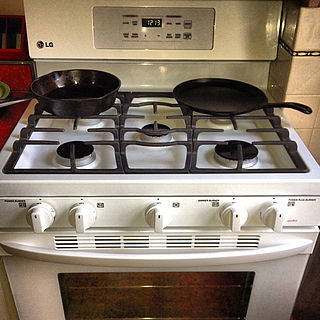 W
WThis is a list of home appliances. A home appliance is a device which accomplishes household functions, such as cooking or cleaning. Home appliances can be classified into:Major appliances Small appliances Consumer electronics
 W
WA major appliance, also known as a large domestic appliance or large electric appliance or simply a large appliance, large domestic, or large electric, is a non-portable or semi-portable machine used for routine housekeeping tasks such as cooking, washing laundry, or food preservation. Such appliances are sometimes collectively known as white goods, as the products were traditionally white in colour, although a variety of colours are now available. An appliance is different from a plumbing fixture because it uses electricity or fuel.
 W
WA small domestic appliance, also known as a small electric appliance or minor appliance or simply a small appliance, small domestic or small electric, is a portable or semi-portable machine, generally used on table-tops, counter-tops or other platforms, to accomplish a household task. Examples include microwave ovens, toasters, humidifiers, food processors and coffeemakers. They contrast with major appliances, such as the refrigerator and washing machine, which cannot be easily moved and are generally placed on the floor. Small appliances also contrast with consumer electronics which are for leisure and entertainment rather than purely practical tasks.
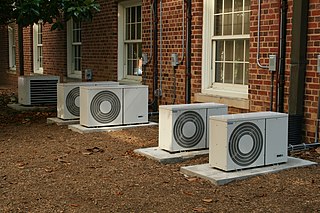 W
WAir conditioning, often abbreviated as A/C or AC, is the process of removing heat and controlling the humidity of air in an enclosed space to achieve a more comfortable interior environment by use of powered "air conditioners" or a variety of other methods, including passive cooling and ventilative cooling. Air conditioning is a member of a family of systems and techniques that provide heating, ventilation, and air conditioning (HVAC).
 W
WAn air ioniser is a device that uses high voltage to ionise air molecules. Negative ions, or anions, are particles with one or more extra electrons, conferring a net negative charge to the particle. Cations are positive ions missing one or more electrons, resulting in a net positive charge. Some commercial air purifiers are designed to generate negative ions. Another type of air ioniser is the electrostatic discharge (ESD) ioniser used to neutralise static charge. In 2002, in an obituary in The Independent newspaper, Cecil Alfred 'Coppy' Laws was credited with being the inventor of the domestic air ioniser.
 W
WAn appliance plug is a three-conductor power connector originally developed for kettles, toasters and similar small appliances. It was common in the United Kingdom, New Zealand, Australia, Germany, the Netherlands and Sweden.
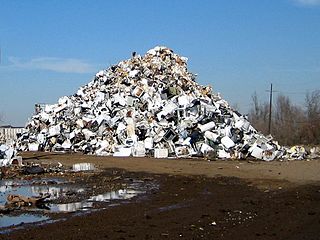 W
WAppliance recycling is the process of dismantling waste home appliances and scrapping their parts for reuse. Recycling appliances for their original or other purposes, involves disassembly, removal of hazardous components and destruction of the equipment to recover materials, generally by shredding, sorting and grading. The rate at which appliances are discarded has increased with technological advancement. This correlation directly leads to the question of appropriate disposal. The main types of appliances that are recycled are televisions, refrigerators, air conditioners, washing machines, and computers. When appliances are recycled, they can be looked upon as valuable resources. If disposed of improperly, appliances can become environmentally harmful and poison ecosystems.
 W
WAroma lamps, or diffusers, are used to diffuse essential oils in aromatherapy and esoterics. They may project the oil into the air by heating it, letting it evaporate naturally, or nebulizing it using compressed air or ultrasonics.
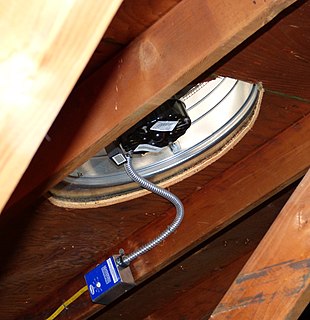 W
WA powered attic ventilator, or attic fan, is a ventilation fan which regulates the heat level of a building's attic by exhausting hot air. A thermostat is used to automatically turn the fan off and on, while sometimes a manual switch is used. An attic fan can be gable mounted or roof mounted. Additional vents are required to draw in the fresh air as the hot air is exhausted. Attic fans are typically used in warmer months, when temperatures in an attic can exceed 120 °F (49 °C). A fan may be installed in an attic for the different purpose of cooling a whole house, venting hot air out via the attic; such fans are often called whole-house fans.
 W
WA bachelor griller, mini oven or mini kitchen is a countertop kitchen appliance about the size of a microwave oven but instead can grill, bake, broil or roast food. It generally incorporates one or two heating elements at the top and bottom of the appliance, has one or two hobs on the cooktop, or a ceramic hotplate, and may incorporate a rotisserie.
 W
WA ceiling fan is a mechanical fan mounted on the ceiling of a room or space, usually electrically powered, that uses hub-mounted rotating blades to circulate air. They cool people effectively by increasing air speed. Fans do not reduce air temperature or relative humidity, unlike air-conditioning equipment but create a cooling effect by helping to evaporate sweat and increase heat exchange via convection. Fans may add a small amount of heat to the room due to friction and waste heat from the motor. Fans use significantly less power than air conditioning as cooling air is thermodynamically expensive. In the winter a ceiling fan can also be used to bring warm air, which naturally rises, back down to occupants. This can affect both thermostat readings and occupants' comfort, thereby improving climate control energy efficiency.
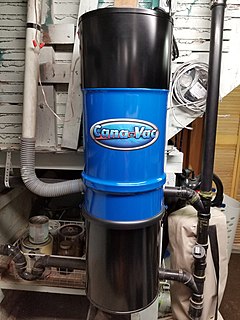 W
WA central vacuum cleaner is a type of vacuum cleaner appliance, installed into a building as a semi-permanent fixture. Central vacuum systems are designed to remove dirt and debris from homes and buildings, sending dirt particles through tubing installed inside the walls to a collection container in a remote utility space. The power unit is a permanent fixture, usually installed in a basement, garage, or storage room, along with the collection container. Inlets are installed in walls throughout the building that attach to power hoses and other central vacuum accessories to remove dust, particles, and small debris from interior rooms. Most power hoses usually have a power switch located on the handle.
 W
WA clothes dryer, also known as tumble dryer or simply dryer is a powered household appliance that is used to remove moisture from a load of clothing, bedding and other textiles, usually shortly after they are washed in a washing machine.
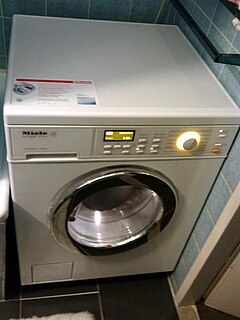 W
WA combo washer dryer is a combination in a single cabinet of a washing machine and a clothes dryer. It should not be confused with a "stackable" combination of a separate washing machine and a separate clothes dryer.
 W
WA crisper drawer is a compartment within a refrigerator designed to prolong the freshness of stored produce. Crisper drawers have a different level of humidity from the rest of the refrigerator, optimizing freshness in fruits and vegetables. They can be adjusted to both prevent the loss of moisture from produce, and also allow ethylene gas produced by certain fruits to escape, thus preventing them from rotting quickly.
 W
WA dehumidifier is an air conditioning device which reduces and maintains the level of humidity in the air. This is done usually for health or comfort reasons, or to eliminate musty odor and to prevent the growth of mildew by extracting water from the air. It can be used for household, commercial, or industrial applications. Large dehumidifiers are used in commercial buildings such as indoor ice rinks and swimming pools, as well as manufacturing plants or storage warehouses.
 W
WA dish drying cabinet is a piece of kitchen shelving placed above the sink, with an open bottom and shelves made of steel wire or dowels to allow washed dishes set within to drip into the sink and air dry.
 W
WA dishwasher is a machine used to clean dishware and cutlery automatically. Unlike manual dishwashing, which relies heavily on physical scrubbing to remove soiling, the mechanical dishwasher cleans by spraying hot water, typically between 45 and 75 °C, at the dishes, with lower temperatures used for delicate items.
 W
WDOMELRE was one of the first domestic electrical refrigerators, invented by Frederick William Wolf Jr. (1879–1954) in 1913 and produced starting in 1914 by Wolf's Mechanical Refrigerator Company in Chicago. Several hundred units were sold, which made it the most commercially successful product out of several competing designs of its time. The unit replaced the block of ice in the icebox with an electrical-powered cooling device, and was completely automatic.
 W
WA dishdrawer is a type of dishwashing machine invented, designed and manufactured by Fisher & Paykel. They are available under several brands depending on geographic location Fisher & Paykel, Kenmore Appliances, KitchenAid, and Bauknecht following a distribution agreement with Whirlpool.
 W
WAn electric water boiler, also called a thermo pot, is a consumer electronics small appliance used for boiling water and maintaining it at a constant temperature. It is typically used to provide an immediate source of hot water for making tea, hot chocolate, coffee, instant noodles, or baby formula, or for any other household use where clean hot water is required. They are a common component of Japanese kitchens and the kitchens of many East Asian countries but are found in varying use globally. Some thermo pots are designed with a feature that can purify water.
 W
WA kitchen hood, exhaust hood, or range hood is a device containing a mechanical fan that hangs above the stove or cooktop in the kitchen. It removes airborne grease, combustion products, fumes, smoke, heat, and steam from the air by evacuation of the air and filtration. In commercial kitchens exhaust hoods are often used in combination with fire suppression devices so that fumes from a grease fire are properly vented and the fire is put out quickly. Commercial vent hoods may also be combined with a fresh air fan that draws in exterior air, circulating it with the cooking fumes, which is then drawn out by the hood.
 W
WA fan heater, also called a blow heater, is a heater that works by using a fan to pass air over a heat source. This heats up the air, which then leaves the heater, warming up the surrounding room. They can heat an enclosed space such as a room faster than a heater without fan, but like any fan, creates audible noise.
 W
WA Futon dryer is an electric device that warms and dries a Japanese futon by forcing warm air through it.
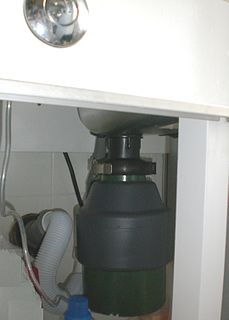 W
WA garbage disposal unit is a device, usually electrically powered, installed under a kitchen sink between the sink's drain and the trap. The disposal unit shreds food waste into pieces small enough—generally less than 2 mm (0.079 in) in diameter—to pass through plumbing.
 W
WA hair dryer, hairdryer or blow dryer is an electromechanical device that blows ambient or hot air over damp hair to speed the evaporation of water to dry the hair. Blow dryers enable better control over the shape and style of hair, by accelerating and controlling the formation of temporary hydrogen bonds within each strand. These bonds are powerful but are temporary and extremely vulnerable to humidity. They disappear with a single washing of the hair.
 W
WA hair iron or hair tong is a tool used to change the structure of the hair using heat. There are three general kinds: curling irons, used to make the hair curly, straightening irons, commonly called straighteners or flat irons, used to straighten the hair, and crimping irons, used to create crimps of the desired size in the hair.
 W
WA humidifier is a device, primarily an electrical appliance, that increases humidity (moisture) in a single room or an entire building. In the home, point-of-use humidifiers are commonly used to humidify a single room, while whole-house or furnace humidifiers, which connect to a home's HVAC system, provide humidity to the entire house. Medical ventilators often include humidifiers for increased patient comfort. Large humidifiers are used in commercial, institutional, or industrial contexts, often as part of a larger HVAC system.
 W
WAn icebox is a compact non-mechanical refrigerator which was a common early-twentieth-century kitchen appliance before the development of safely powered refrigeration devices. Before the development of electric refrigerators, iceboxes were referred to by the public as "refrigerators". Only after the invention of the modern day electric refrigerator did early non-electric refrigerators become known as iceboxes. The terms ice box and refrigerator were used interchangeably in advertising as long ago as 1848.
 W
WAn icemaker, ice generator, or ice machine may refer to either a consumer device for making ice, found inside a home freezer; a stand-alone appliance for making ice, or an industrial machine for making ice on a large scale. The term "ice machine" usually refers to the stand-alone appliance.
 W
WThe LG Internet Digital DIOS is an internet refrigerator released by LG Electronics in June 2000. The technology is the result of a project that started in 1997 and staffed by a team of 55 researchers with a budget cost of 15 billion won.
 W
WA clothes iron is a small appliance that, when heated, is used to press clothes to remove creases. Domestic irons generally range in operating temperature from between 121 °C (250 °F) to 182 °C (360 °F). It is named for the metal (iron) of which the device was historically made, and the use of it is generally called ironing, the final step in the process of laundering clothes.
 W
WA kimchi refrigerator is a refrigerator designed specifically to meet the storage requirements of kimchi and facilitate different fermentation processes. Kimchi usually becomes too sour when stored in a conventional refrigerator for about a week. In contrast, kimchi can be stored up to 4 months without losing its qualities in a kimchi refrigerator. The kimchi refrigerator aims to be colder, with more consistent temperature, more humidity, and less moving air than a conventional refrigerator, providing the ideal environment for fermentation of kimchi. Some models may include features such as a UV Sterilizer.
 W
WA lawn mower is a machine utilizing one or more revolving blades to cut a grass surface to an even height. The height of the cut grass may be fixed by the design of the mower, but generally is adjustable by the operator, typically by a single master lever, or by a lever or nut and bolt on each of the machine's wheels. The blades may be powered by manual force, with wheels mechanically connected to the cutting blades so that when the mower is pushed forward, the blades spin or the machine may have a battery-powered or plug-in electric motor. The most common self-contained power source for lawn mowers is a small internal combustion engine. Smaller mowers often lack any form of propulsion, requiring human power to move over a surface; "walk-behind" mowers are self-propelled, requiring a human only to walk behind and guide them. Larger lawn mowers are usually either self-propelled "walk-behind" types or more often, are "ride-on" mowers, equipped so the operator can ride on the mower and control it. A robotic lawn mower is designed to operate either entirely on its own or less commonly by an operator by remote control.
 W
WA leaf blower, commonly known as a blower, is a gardening tool that propels air out of a nozzle to move debris such as leaves and grass cuttings. Leaf blowers are powered by electric or gasoline motors. Gasoline models have traditionally been two-stroke engines, but four-stroke engines were recently introduced to partially address air pollution concerns. Leaf blowers are typically self-contained handheld units, or backpack mounted units with a handheld wand. The latter is more ergonomic for prolonged use. Larger units may rest on wheels and even use a motor for propulsion. These are sometimes called "walk behind leaf blowers" because they must be pushed by hand to be operated. Some units, called blower vacs, can also suck in leaves and small twigs via a vacuum, and shred them into a bag.
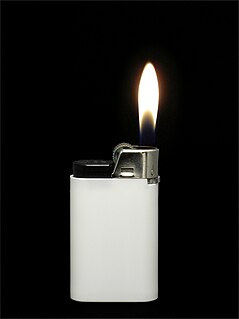 W
WA lighter is a portable device which generates a flame, and can be used to ignite a variety of items, such as cigarettes, gas stoves, fireworks, candles or campfire. It consists of a metal or plastic container filled with a flammable liquid or compressed gas, a means of ignition to produce the flame, and some provision for extinguishing the flame. Alternatively, a lighter can be powered by electricity, using an electric arc or heating element to ignite the target.
 W
WA matchbook is a small paperboard folder enclosing a quantity of matches and having a coarse striking surface on the exterior. The folder is opened to access the matches, which are attached in a comb-like arrangement and must be torn away before use in contrast to a matchbox where the matches are loosely packed in the interior tray.
 W
WA microwave oven is an electric oven that heats and cooks food by exposing it to electromagnetic radiation in the microwave frequency range. This induces polar molecules in the food to rotate and produce thermal energy in a process known as dielectric heating. Microwave ovens heat foods quickly and efficiently because excitation is fairly uniform in the outer 25–38 mm (1–1.5 inches) of a homogeneous, high water content food item.
 W
WA mousetrap is a specialized type of animal trap designed primarily to catch and, usually, kill mice. Mousetraps are usually set in an indoor location where there is a suspected infestation of rodents. Larger traps are designed to catch other species of animals, such as rats, squirrels, other small rodents, or other animals.
 W
WA personal computer (PC) is a multi-purpose computer whose size, capabilities, and price make it feasible for individual use. Personal computers are intended to be operated directly by an end user, rather than by a computer expert or technician. Unlike large, costly minicomputers and mainframes, time-sharing by many people at the same time is not used with personal computers.
 W
WA refrigerator is a commercial and home appliance consisting of a thermally insulated compartment and a heat pump that transfers heat from its inside to its external environment so that its inside is cooled to a temperature below the room temperature. The refrigerator should be kept at or below 40° F and the freezer should be regulated at 0° F. Refrigeration is an essential food storage technique around the world. The lower temperature lowers the reproduction rate of bacteria, so the refrigerator reduces the rate of spoilage. A refrigerator maintains a temperature a few degrees above the freezing point of water. Optimum temperature range for perishable food storage is 3 to 5 °C. A similar device that maintains a temperature below the freezing point of water is called a freezer. The refrigerator replaced the icebox, which had been a common household appliance for almost a century and a half.
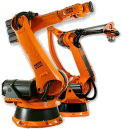 W
WA domestic robot is a type of service robot, an autonomous robot that is primarily used for household chores, but may also be used for education, entertainment or therapy. While most domestic robots are simplistic, some are connected to Wi-Fi home networks or smart environments and are autonomous to a high degree. There were an estimated 16.3 million service robots in 2018.
 W
WA sewing machine is a machine used to sew fabric and materials together with thread. Sewing machines were invented during the first Industrial Revolution to decrease the amount of manual sewing work performed in clothing companies. Since the invention of the first sewing machine, generally considered to have been the work of Englishman Thomas Saint in 1790, the sewing machine has greatly improved the efficiency and productivity of the clothing industry.
 W
WA smart refrigerator, also known as internet refrigerator, is a refrigerator which is able to communicate with the internet. This kind of refrigerator is often equipped to determine itself whenever a food item needs to be replenished.
 W
WA soda machine or soda maker is a home appliance for carbonating tap water by using carbon dioxide from a pressurized cartridge. The machine is often delivered with flavorings which can be added afterwards to the carbonated water to make soda, like for instance orange, lemon or cola flavours.
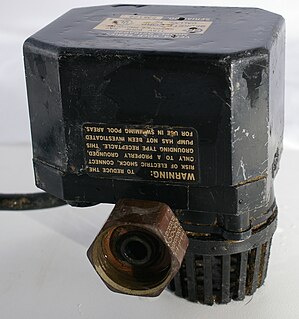 W
WA sump pump is a pump used to remove water that has accumulated in a water-collecting sump basin, commonly found in the basements of homes. The water may enter via the perimeter drains of a basement waterproofing system, funneling into the basin or because of rain or natural ground water, if the basement is below the water table level.
 W
WA telephone is a telecommunications device that permits two or more users to conduct a conversation when they are too far apart to be heard directly. A telephone converts sound, typically and most efficiently the human voice, into electronic signals that are transmitted via cables and other communication channels to another telephone which reproduces the sound to the receiving user. The term is derived from Greek: τῆλε and φωνή, together meaning distant voice. A common short form of the term is phone, which came into use almost immediately after the first patent was issued.
 W
WThe Thor washing machine was the first electric clothes washer sold commercially in the United States. Produced by the Chicago-based Hurley Electric Laundry Equipment Company, the 1907 Thor is believed to be the first electrically powered washer ever manufactured, crediting Hurley as the inventor of the first automatic washing machine. Designed by Hurley engineer Alva J. Fisher, a patent for the new electric Thor was issued on August 9, 1910, three years after its initial invention.
 W
WA toaster is an electric small appliance designed to expose various types of sliced bread to radiant heat, browning the bread so it becomes toast.
 W
WA trouser press, also referred to by the trademarked name Corby trouser press, is an electrical appliance used to smooth the wrinkles from a pair of trousers (pants). They are commonly provided in hotel rooms worldwide, though may also be purchased for home use; they are generally associated with use by businessmen who require a formal appearance to their suit.
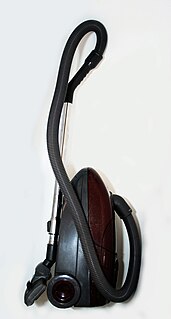 W
WA vacuum cleaner, also known simply as a vacuum or a hoover, is a device that causes suction in order to remove debris from floors, upholstery, draperies, and other surfaces. It is generally electrically driven.
 W
WA washing machine is a home appliance used to wash laundry. The term is mostly applied to machines that use water as opposed to dry cleaning or ultrasonic cleaners. The user adds laundry detergent, which is sold in liquid or powder form, to the wash water.
 W
WA water dispenser, known as water cooler, is a machine that cools or heats up and dispenses water with a refrigeration unit. It is commonly located near the restroom due to closer access to plumbing. A drain line is also provided from the water cooler into the sewer system.
 W
WA window fan is a fan designed to be placed inside the frame of a window. Window fans have been used for many decades to maintain comfortable temperatures and ventilation within one's home, and operate at a tiny fraction of the cost of central air conditioning.